#early 1890s fashions
Text

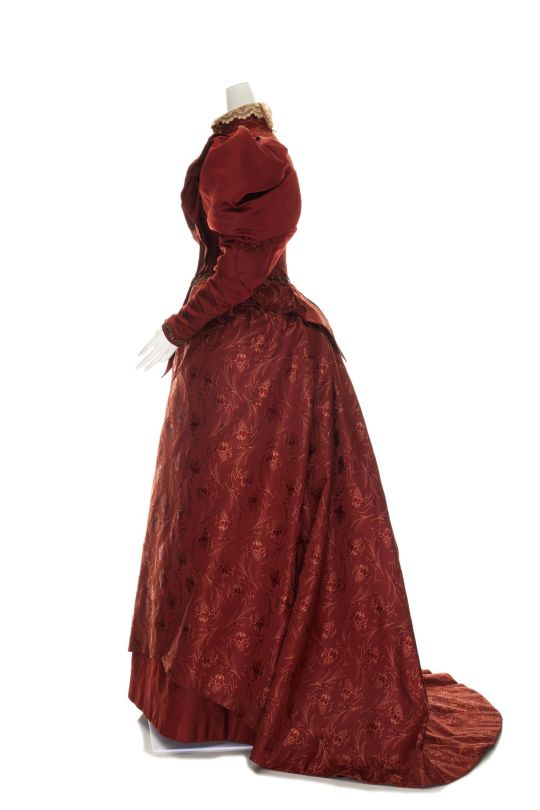
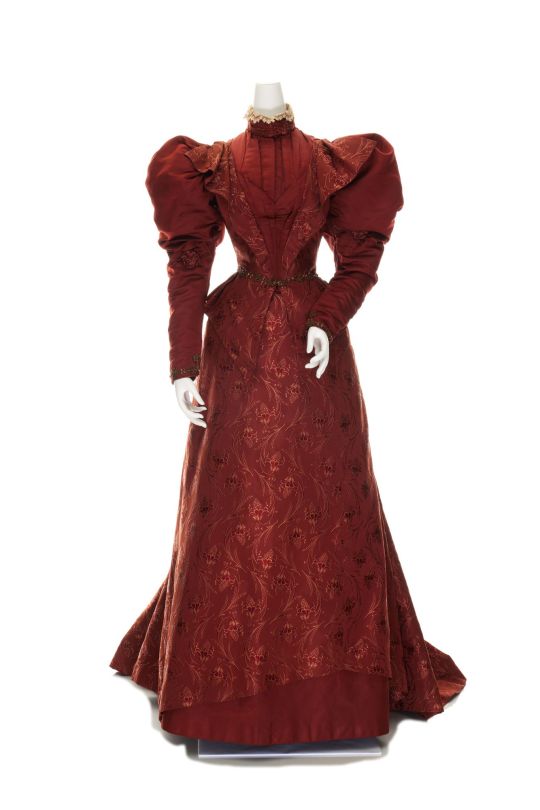
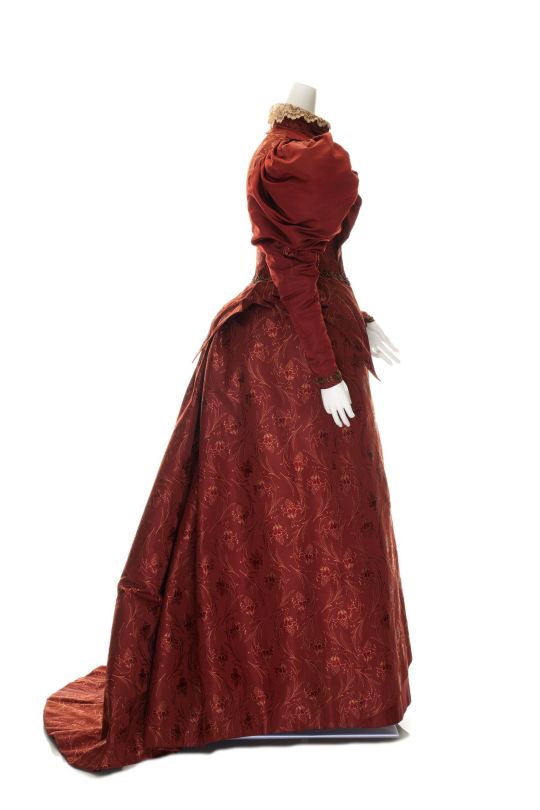
• Day Dress.
Date: 1890-1900
Designer/Maker: David Jones Pty Ltd. (Sydney, New South Wales, Australia); Owner: Mrs. Amy Grimley (Sydney, New South Wales, Australia)
Medium: Silk brocade, faille, glass beads, sequins, metal.
#fashion history#history of fashion#dress#fashion#19th century fashion#19th century#19th century dress#early 20th century#day dress#red dress#david jones#amy grimley#1890#1900
1K notes
·
View notes
Text

Fireman's Coat
Late 19th Century to Early 20th Century
Japan
Japanese firemen's coats are reversible. When fighting fires, the coat was worn as shown, together with close-fitting trousers, a hood, and gloves. Saturated with water, these garments gave protection against flames. A bold, legible pattern on the back identified the fireman’s brigade. For festive occasions, the pictorial side faced outward. This coat shows the Toad Spirit offering to teach the robber Jiraya magic, provided he used it only to benefit humanity.
Denver Art Museum (Accession Number: 1999.265)
#coat#outerwear#fashion history#historical fashion#non western fashion#japanese fashion#late 19th century#early 20th century#turn of the century#1880s#1890s#1900s#1910s#denver art museum
1K notes
·
View notes
Text
Etiquette of the Edwardian Era and La Belle Époque: How to Dress
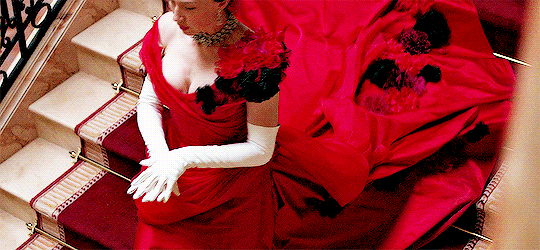
This is a new set of posts focusing on the period of time stretching from the late 19th century to the early 20th Century right up to the start of WWI.
I'll be going through different aspects of life. This series can be linked to my Great House series as well as my Season post and Debutant post.
Today will be focusing on the rules of clothes with this time period.
A Cut for Every Occasion
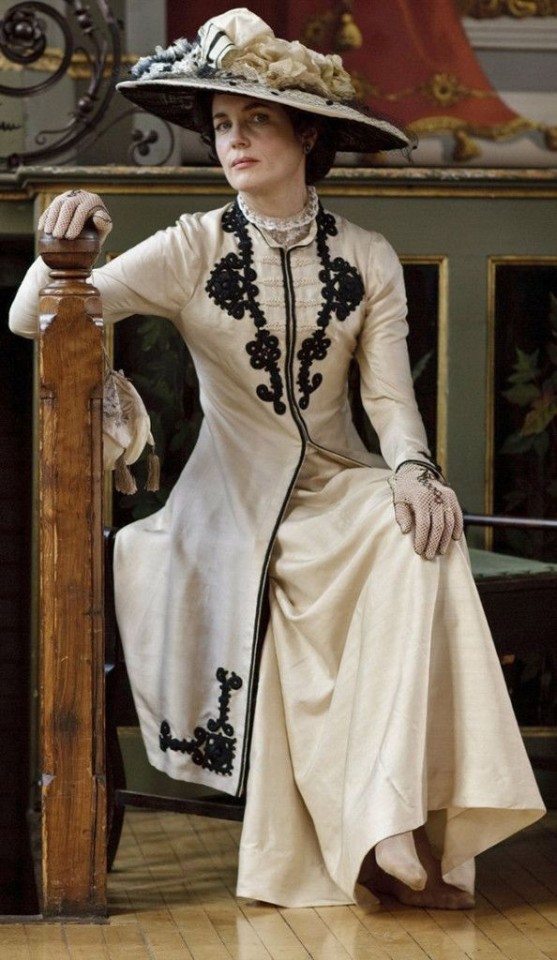
As you may know, the wealthy elite and their servants lived extremely regimented lives and every aspect was governed by careful rules. They would be expected to wear the right outfit at the right time, every minute of the day. Any misstep would be noticed at once and be subject to scruntiny.
In the circles of the elite, one would be expected to change for every occasion. One simply wouldn't wear the same outfit they've been lying around the house in to attend tea at somebody's house. Fashion in this era was dictated by the clock and by the event diary of the wearer.
Ladies

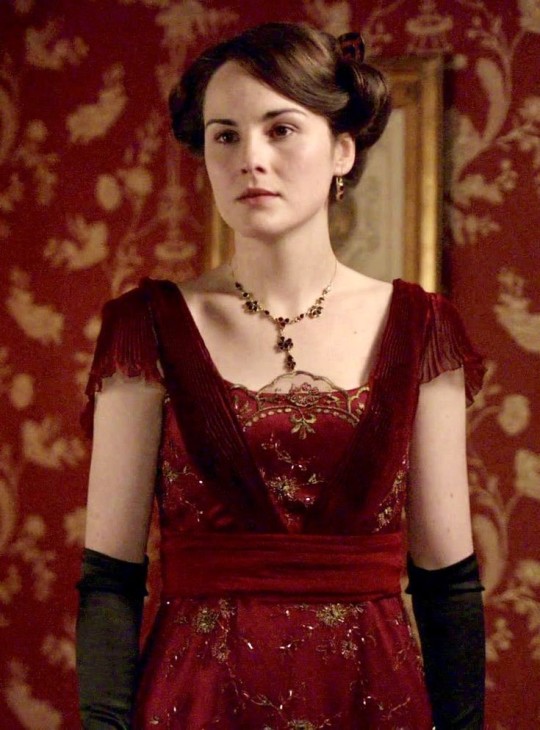
Women of the upperclass would be expected to change at least six times a day. When she would rise for a morning of repose around the house, she would simply wear a house gown or a simple blouse and skirt. If planning a morning stroll, she would change into a walking suit which is a combination of blouse, skirt and jacket along with her hat usually of tweed. If running errands or paying a visit to friends, she would wear another walking suit. If riding, she would wear a riding habit and a hat. If hosting tea or taking tea in her own home, she would change into a tea gown with is a lighter more airier gown more comfortable for chilling in. If attending a garden party, one wears a pastel or white formal day gown accompanied by a straw hat and gloves. For dinner, she would change into an evening gown which would be more elaborate and show off a little more skin than her day wear. After dinner and ready for bed, she would change into her nightgown.
Female servants had an easier time of it. A housekeeper and lady's maid would simply wear a solid black gown for the entire day. A cook and kitchen maids would wear a simple day dress for working with an apron. Housemaids would usually wear a print dress with an apron and cap, changing into the more formal black and white attire you would associate with a maid.
Gentlemen

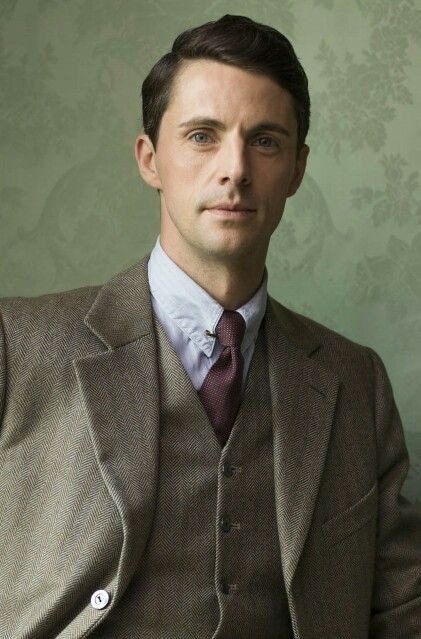
The gentlemen had an easier time but they too were subject to changes throughout the day. Men were expected to wear a suit. The most popular day time suit was a sack suit. These were comprised of plain and loose fitting jackets, worn over a starched shirt with a high collar, waistcoat and straight trousers with ironed creases. These suits were exclusively wool with cheaper ones made of a wool and cotton blend. Grey, green, brown, navy were usual but sine younger men preferred louder colours such as purple which was a trend for a time in the 1910s. These suits were worn about the house or in the city accompanied by a coat. Men would change into tweed if shooting or walking. For garden parties, a gentleman would wear a light coloured suit, usually white and a straw hat. For dinner, a man had two choices: his tails or his dinner jacket. A dinner jacket was for less formal suppers say if dining at home. This was a collection of a jacket, trousers, waistcoat, a bow tie, a detachable wing-collar shirt and black shoes. Lapels of these jackets were edged with silk or satin. Tails were worn at a formal dinner party, at White Tie events. This was made up of a tailcoat, white piqué waistcoat, a starched dress shirt with a pique bib and standing wing collar with a white bow tie. Trousers were lined with trim to hide the seams.
Male servants were soared changing. Footmen would wear their livery around the clock which would resemble white tie to a certain extent or mimic court dress of palace servants. Butler's would wear a variation of a gentleman's evening suit throughout the day. When a male servant is dressed, he usually stays that way. However, a valet or a footman may be taken to pick up during shooting parties where they would wear tweed walking suits.
Jewellery
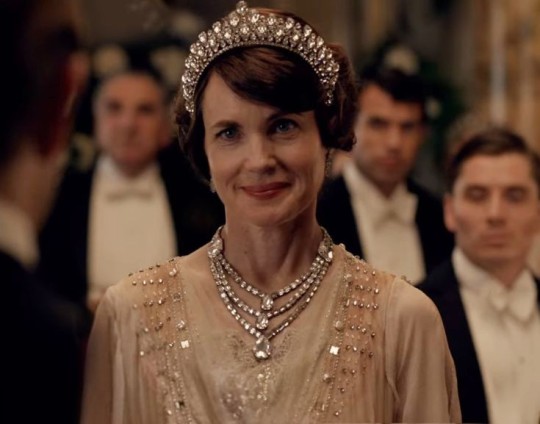
Jewellery was an important sign of status in society. Upperclass women of this time has access to untold caches of sparklers but there were rules concerning their use and meaning. Earrings were usually clip ons as women of high status would not pierce their ears. Simple, understated earrings were worn during the day with more ostentatious sets were worn in the evening time. Broaches were popular at this time, usually worn at the throat of a gown or blouse or walking suit or affixed on hats. Large stoned rings were worn over gloves while slender bands were worn under. Jewellery was intricate and understated amongst old money whole the nouveau riche went for chunkier stones and larger settings. Tiaras were only worn at White Tie events, held after six pm and almost never by unmarried girls. One would not wear a larger tiara than that most senior lady present. Men would wear tie pins, cufflinks and pocket watches to match any occasion be it for a jaunt on the town or at a formal evening party.
Hats
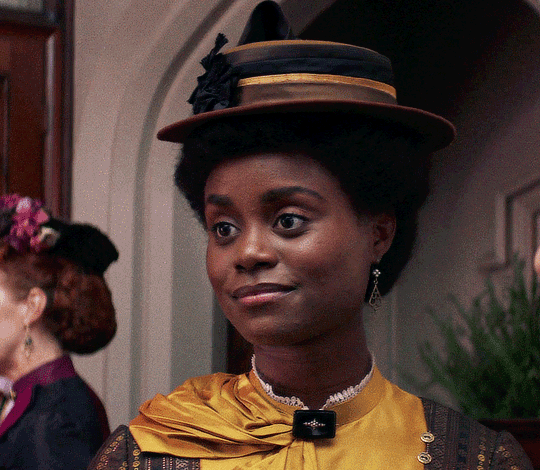
Hats were a staple in this period. Anybody respectable from any class wouldn't venture out of the door without a hat.
Men would wear hats when heading out but always remove them when entering a building, and never wear one without removing it for the presence of a lady. The bowler was seen as more a servant's headwear while a top hat was reserved for gentlemen. Flat caps would be only seen on gentlemen at shooting gatherings or in the country, they were popular among the common class for any informal occasion.
Women had more stricter rules concern hats. Hats for women were more a day accessory worn while out and about. A woman would not wear a hat in her own home even when entertaining and nor would any of the other female occupants if joining the gathering. A woman would not remove her hat when attending a luncheon or tea or any activity. Hats were held in place by a ribbon or sash tied under the chin or by a hat pin, which is essentially a large needle thrust through the hair. This was the period where women's hats became more ornate and rather large, leading to some critisism. Among servants, housekeepers and lady's maids would not wear a hat while indoors and working but a housemaid or cook or kitchen maid would cover their hair with a cap with housemaids changing into a more elaborate one come evening time. Male servants would not wear hats unless travelling or outdoors.
Gloves

Gloves are a staple in this period and worn only at the opportune time. Among servants, only footmen would wear gloves and usually only when serving. Butlers would never wear gloves. Female servants did not wear gloves.
Men did wear gloves, usually woollen or leather while outside or riding gloves when out on horseback.
Women wore gloves whenever outside. Day gloves were usually wrist length, with evening gloves stretching to the elbow. During dinner, evening gloves would be removed at the first course and laid across the lap, replaced at the last course when the ladies leave for tea and coffee after where the gloves are then removed again. Gloves are always worn when dancing and at the theatre or opera. If one is sitting in ones box and sampling some chocolate, one can remove their gloves for that.
Hair and Makeup
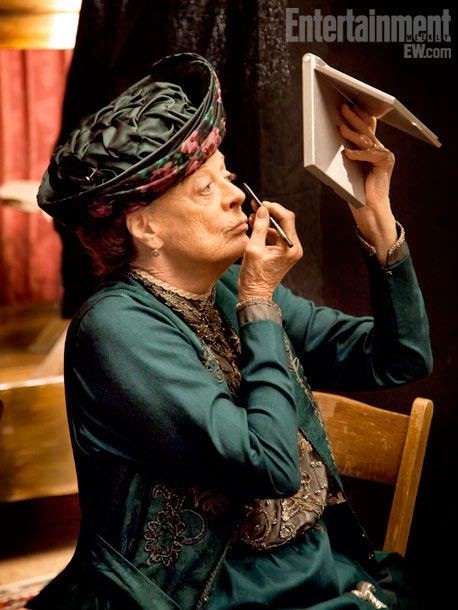
Make up was a no-no amongst the upper crust and for their servants in England and America, as it was seen as licentious but in France, the use of rouge was accepted. Perfume and cologne were acceptable but excessive use was frowned upon.
Hair was dressed by one's lady's maid. Bouffant updos were popular in this time period for married women. During the last years of this period, women began adopting the 'bob' but this was seen as radical and sometimes scandalous. Unmarried girls could wear their hair down, often with accessories like a bow to adorn their tresses. Servants would always tie up their hair and never be seen with it down or uncovered (though this depended on their job).
Men would comb their hair, slicking it back for dinner. Most men were clean shaven but if they wore beards, they were usually well groomed. Hair was kept short for grown men and teenagers but young boys may wear their hair longer whilst in the nursery.
#This bitch loooonnnnggg#Etiquette of the Edwardian Era and La Belle Époque series#Fantasy Guide#Early 20th Century#late 19th century#Great houses#writing#writeblr#writing resources#writing reference#writing advice#ask answered questions#writing advice writing resources#writers#Writing advice writing references#Writing references#Historical fiction#1900s#1890s#Fashion
576 notes
·
View notes
Text

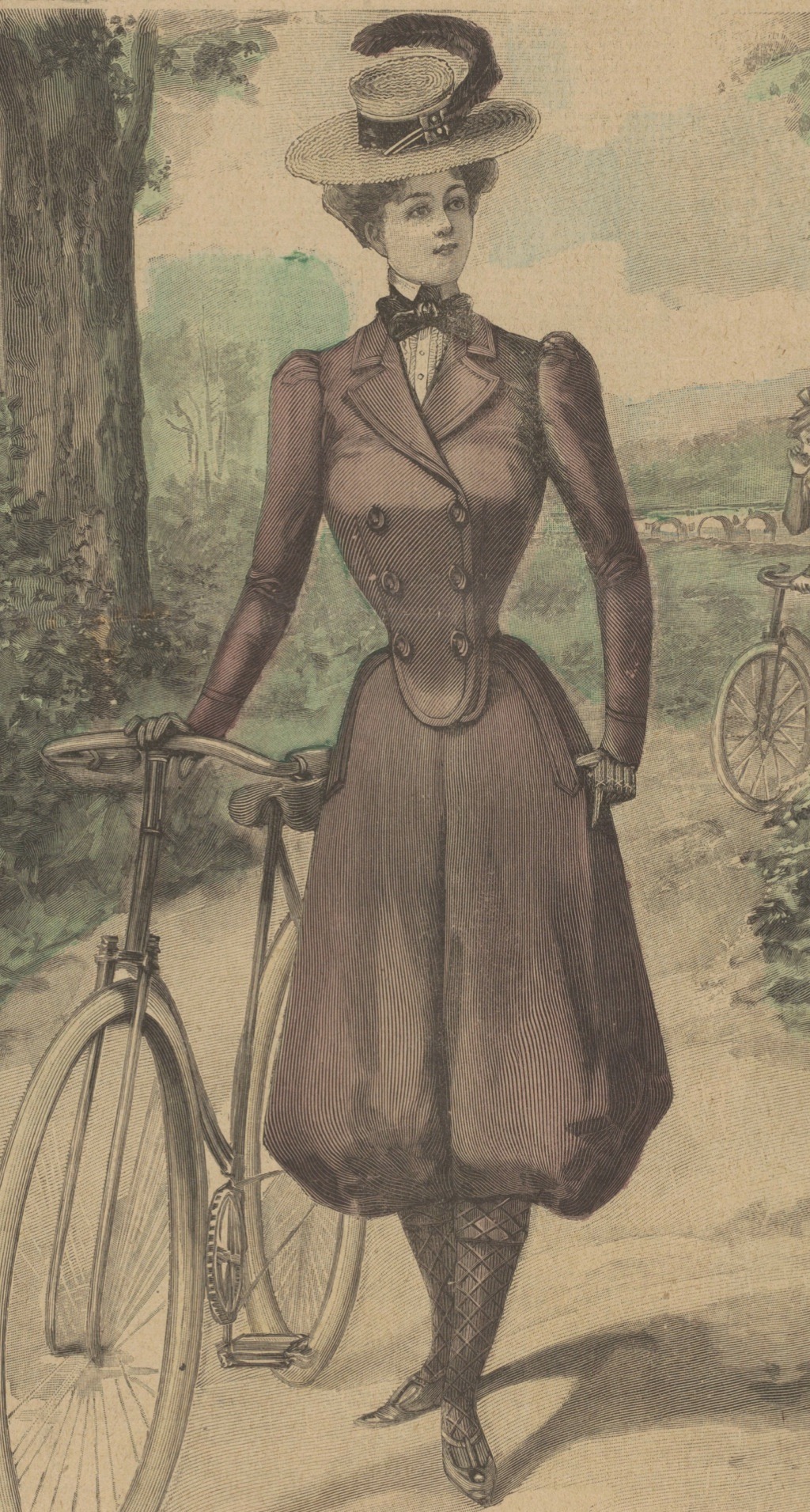
#historical fashion polls#fashion plate#fashion poll#historical dress#historical fashion#dress history#fashion history#19th century#19th century fashion#late 19th century#19th century dress#early 20th century#1890s dress#1890s fashion#circa 1890#1890s#circa 1897#circa 1900#early 1900s
52 notes
·
View notes
Text
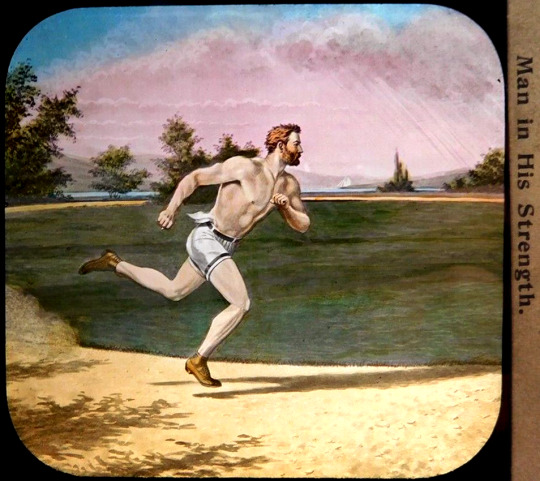
Magic lantern glass slide entitled "Man in His Strength" depicting a very fit fellow running in very small shorts, c. 1890s
#when you're either 10 mins late or 100 years early to the pride parade#check out the heel on these leather running shoes!#19th century#1800s#1890s#19th century fashion#fashion history#historical fashion#sportsmen#sportswear#short shorts#19th century illustration#magic lantern glass slide#as always refer to seller's pics if buying—I have straightened sharpened and touched up image for tumblr
164 notes
·
View notes
Text
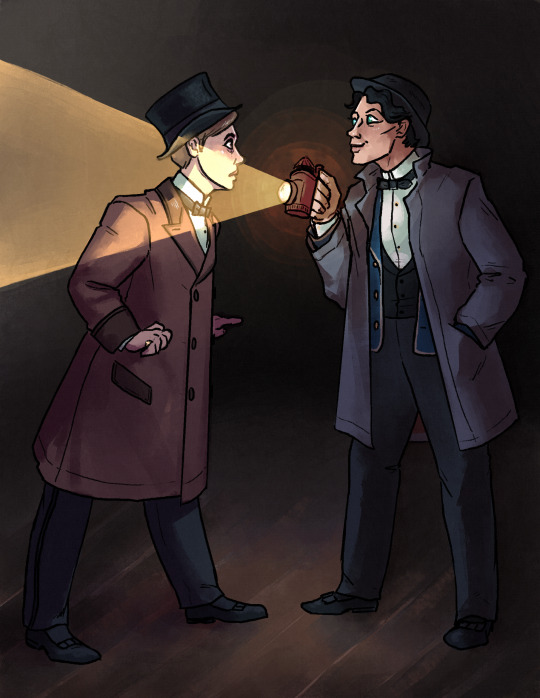
playing w these designs a bit more before i start trying to use them in actual comic pages, so firstly a redraw of my favourite one of the og illustrations from Ides of March <3
(under the cut, along w an alt version of mine)


#raffles#raffles fanart#aj raffles#bunny manders#cannot explain why this is my favourite but when i first saw it i was like. oh! thats him!#but bro getting the shape right on early 1890s trousers is so hard.#i realise this doesnt matter much overall but.#the fashion history. it calls to me#dfkdfhs#edit: woa this is my 600th post on this blog apparently. wtf
49 notes
·
View notes
Text
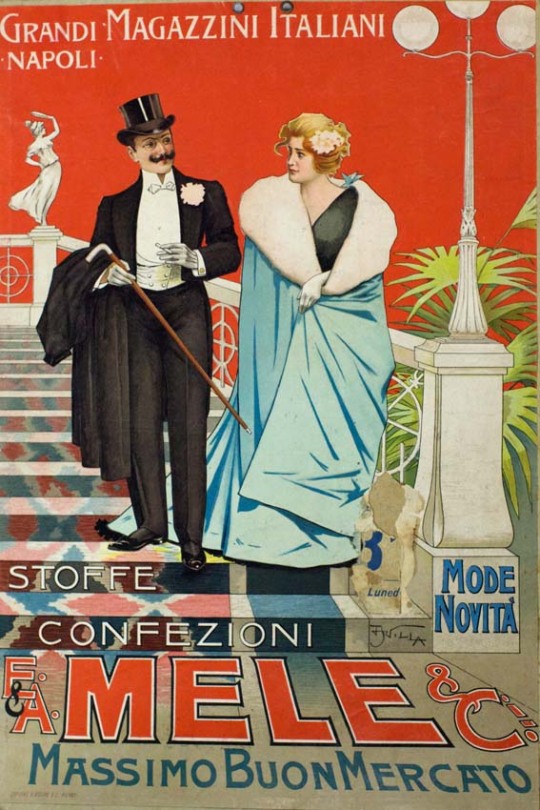




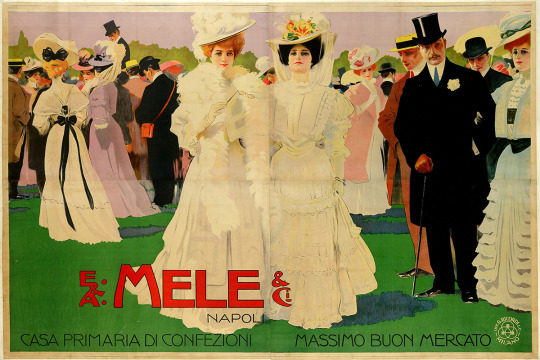
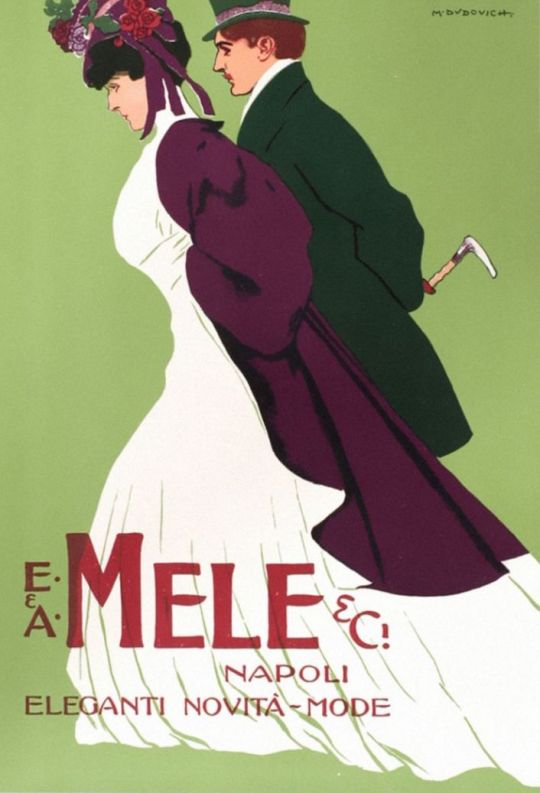
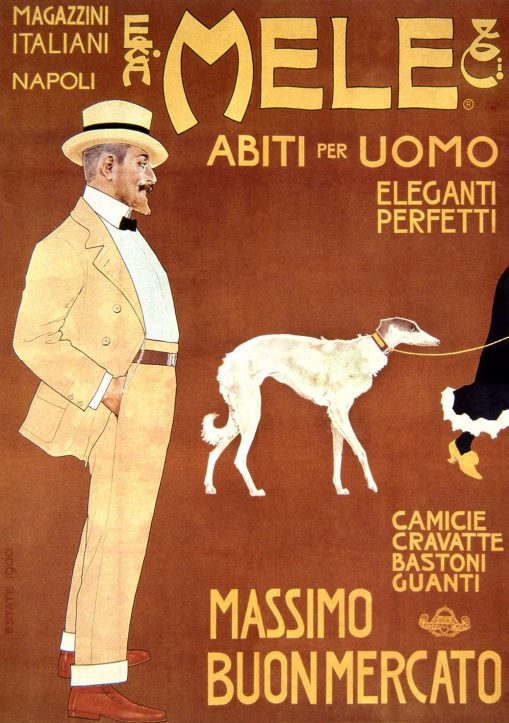
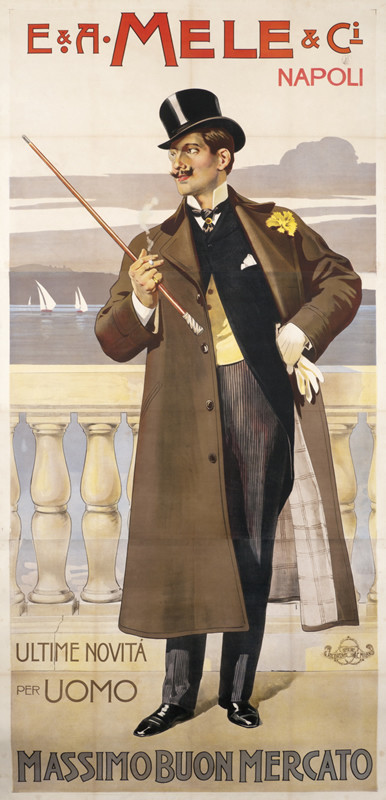

Fashion ads compilation from the Mele Brothers department stores (1890s - 1900s)
#I wanted to share some fashion stuff today because this style is a big inspo for me#the colours and contrasts here are gorgeous#the stores were operating from 1889 to 1932 and a lot of ads are uploaded online#the main artists were:#Marcello Dudovich#Achille Beltrame#Leopoldo Metlicovitz#Gian Emilio Malerba#fashion advertisement#historical fashion#1890s#1900s#early 1900s#1900s fashion#fashion illustration#vintage ads#vintage advertising#fashion ads#italian fashion#my posts#fashion
48 notes
·
View notes
Text

"Vengeance"
Photographed by Constant Puyo, 1896.
#1890s#*#old photos#women#19th century#constant puyo#émile joachim constant puyo#photography#victorian era#victorian photography#early photography#antique#antique photo#victorian woman#old photography#vintage#vintage photography#antique fashion#old photo#victorian style#victorian fashion#vintage women#vintage fashion#vintage style#historic photographs#1890s fashion#victorian#feminist
53 notes
·
View notes
Text
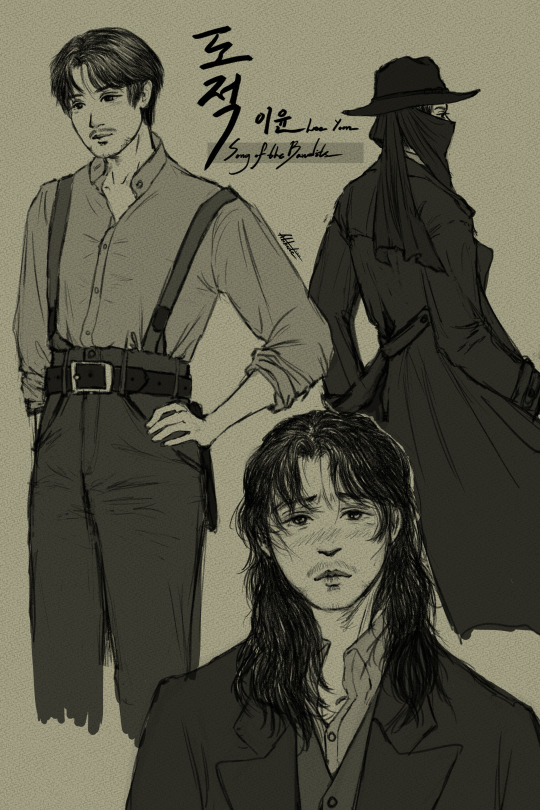



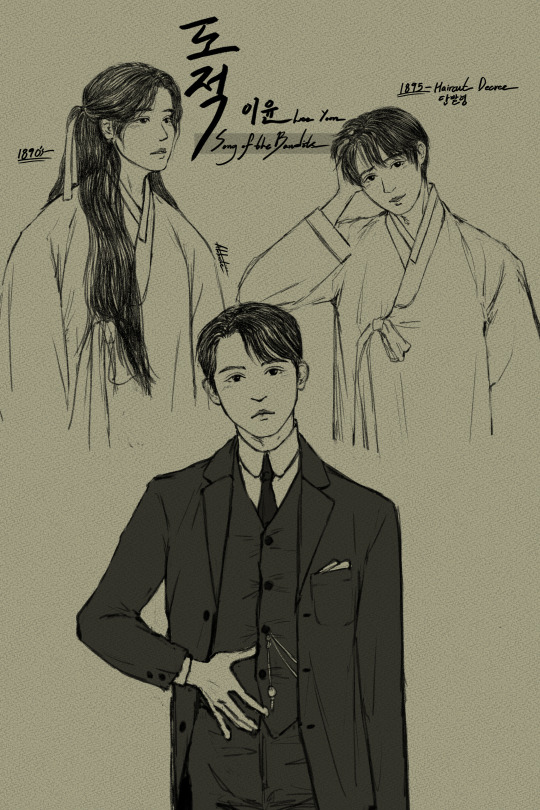

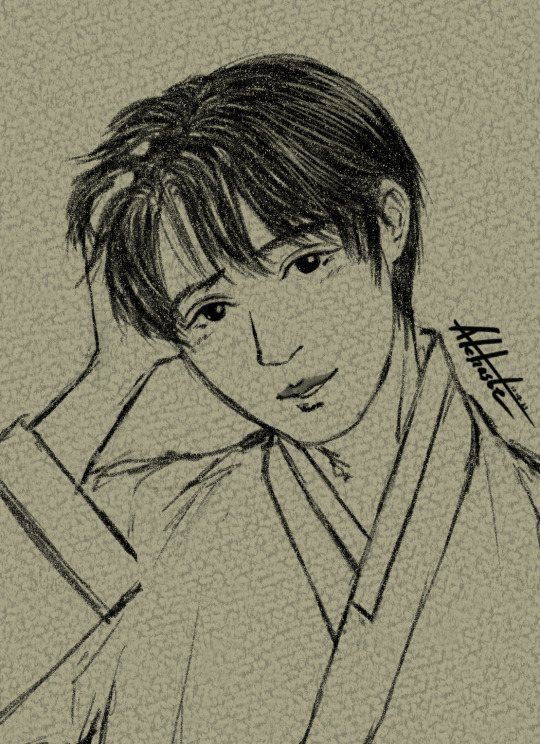

Lee Yoon - Song of the Bandits Sketchs/ Studies
1920's & 1890's
Bonus: 1920's, but without the 'stache

#song of the bandits#lee yoon#kim nam gil#도적#descriptions are on the 1890's close ups if u want the general historic background/ timeline I'm thinking of!#The hold this show & this man have over all my remaining brain cells#I'm still very HHHHHHHH about all the backstory they apparently saved? for S2?? and going all AHHHHH about it#also early 1900s fashion my beloved <3#but ngl lil salty we were likely robbed of the hanbok content so i'm adding it here <3#and Yoon w/ long hair...our time was too short but you will live forever in my heart <3 <3 <3#so here ya go. very much in the spirit of make the content you wanna see#side note: while figuring out the timeline for this I realized there is. a 9 year gap. between Yoon's emancipation and the ball scene#9 YEARS. ALMOST A WHOLE DECADE. THAT WE KNOW 0 THINGS ABOUT.#LIKE WHAT WAS HE DOING THEN!!! HOW DID HE GET BY!! WHAT WAS HIS LIFE LIKE!!! WHAT WERE HIS RELATIONSHIPS LIKE!!!!! I WANNA KNOW!!!!!#this also means when we start the show it's been like. 20 years??? since Yoon was a free man???#also somehow this makes his relationship with gwangil even more fucked up i don't know what to do with this 😭#i mean it's assuming the timeline is strictly historical but#this is all i'm gonna think about now#I need every year and character in this show accounted for i'm not even joking#my art#my art*kng
23 notes
·
View notes
Text
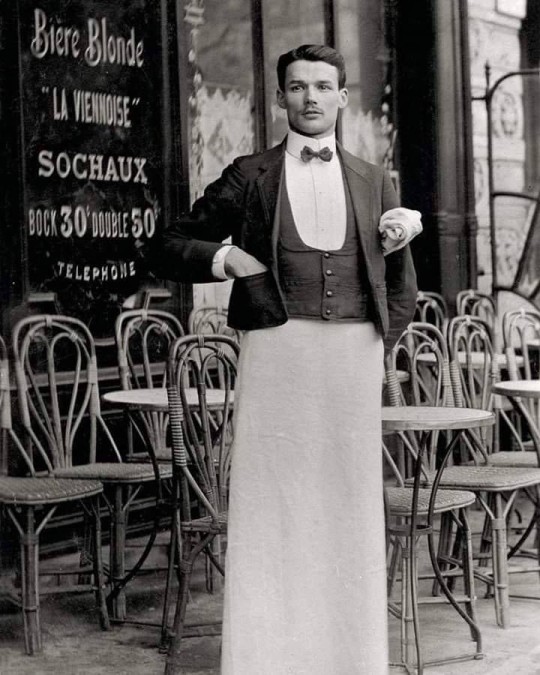
Parisian waiter, c. 1900's.
#history#old photography#victorian era#19th century#antique photography#19th century fashion#19th century photography#antique#victorian photography#old photograph#1890s#1900s#early 20th century#edwardian boyfriend#edwardian#belle epoque#edwardian era#victorian fashion#fashion history#french history#Paris#late 19th century#history crushes#history crush#victorian boyfriend#victorian#vintage#belle époque
341 notes
·
View notes
Text

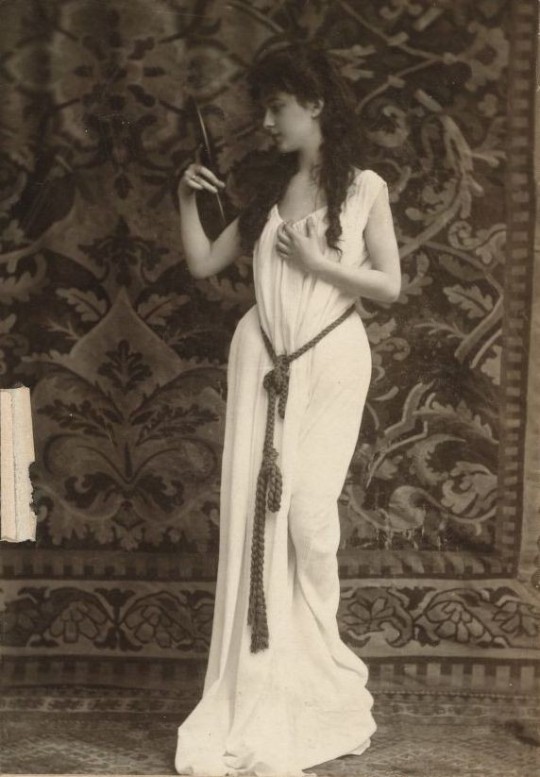
Evelyn Nesbit (1884-1967)
5 notes
·
View notes
Text
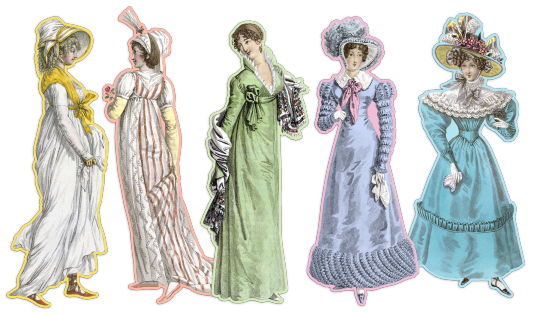


19th century fashion plates, designs, etc.
(with late 18th and early 20th century plates)
Tagged by decade:
1790s | 1800s | 1810s | 1820s | 1830s | 1840s | 1850s | 1860s | 1870s | 1880s | 1890s | 1900s | 1910s | 1920s | 1930s | 1940s
Check out today’s plates.
Or check out the art, design, and fashion posts I reblog.
#fashion#fashion plate#collage#1790s#18aughts#1810s#1820s#1830s#1840s#1850s#1860s#1870s#1880s#1890s#1900s#1910s#1920s#1930s#1940s
403 notes
·
View notes
Text
NSFW Hogwarts in the 1890s Headcanons
Convenient Plot Devices
(to make my smut more believable)
(aka Nurse Blainey is a very supportive and progressive witch doctor!)

Every girl over the age of 15 (sometimes earlier) is required to take contraceptive potions as per request by Nurse Blainey who had to deal with horny teenagers and their lack of mind for consequences for too long.
Boys don't have to take them, but can if they are so inclined.
Very reluctantly, the recipe for that potion is taught by Professor Sharp in the Sixth-years' Potions class.
There are potions for every ailment (usually provided by Nurse Blainey), including aftermath soreness or the "potion after" if a witch/wizard forgot to take their contraceptive potion.
There were indeed condoms*, but not every wizard carried them, so the potions and/or a quick disappearing spell had to be used to prevent pregnancies.
*Condoms were usually distributed in barbershops in the late 19th/early 20th century (according to Wikipedia) so I imagine Madam Snelling selling them under the counter in her hair salon.
There is no sex-ed class in Hogwarts, but again, Nurse Blainey is the first to hand out informative literature* or reading recommendations.
The Restricted Section of the library has an entire room filled with erotic fiction, anatomical books and various guides to help out the eager witch or wizard.
*Informative literature included tips and guides for the uterus-bearing population on how to deal with bleeding. As early as 1890, probably even earlier, there was the "invention" of pad-belts/sanitary belts in Victorian England, those were re-usable and I can imagine even easier to use for witches because instead of cleaning them the old-fashioned way, they could just clean them with a swish of their wand. (Read more on the history of menstrual pads here if you're interested.)
Ignatia Wildsmith has seen more horny teenagers making out in front of her Floo flames than people actually using that way of travel.
Ghosts see a lot of things and mostly they don't care about it, unless they are Richard Jackdaw* who likes to stalk those horny teenagers more often than is appropriate.
*Shameless plug: I wrote a smut piece about our favorite horny ghost called The Horny Ghost (how creative).
"Silencio" is the most used spell in the dormitories, boys' and girls' alike.
Hufflepuffs are the only ones who don't have curtains around their beds! But I bet they can think of other devices to get some privacy. Maybe they're masters of the Disillusionment charm!
On that note: only Ravenclaws have their own in-house bathrooms - with actual bathtubs! Slytherins have to leave their common room, and Gryffindors and Hufflepuffs have to walk quite a while to find the nearest bathroom.
[Correction: there are bathrooms, one with stalls, one with stalls and bathtubs, in the Gryffindor common room, but only on the girls' side! (Thanks to @mianeryh for pointing that out!)]
But this is a post about HCs, not actual fact/pointing out lazy game design, so I'd like to imagine that all houses have at least one communal bath/bathroom area very close to their dormitories.
*By the way: In the Slytherin, Gryffindor and Hufflepuff common rooms, the girls' dormitories are upstairs, so they have the stairs turning into slides whenever a boy tries to access them, whereas in the Ravenclaw common room, the girls have to go down the stairs and are "only" protected by two suits of armor guarding the way, which in turn makes it easier to sneak past!
Popular make-out places are: the boat-house, the underground harbor, the loft above the Great Hall, the kitchens (poor house-elves), the Prefects' bathroom, the Restricted Section of the library, any dark empty hallway, any empty classroom/storage room, the Undercroft and the Room of Requirement (if they know of them), ...
*Honestly: anywhere is possible in the large castle that is Hogwarts!
Let's talk fashion: we've all seen the HL undergarments of girls and boys, right? Here is an amazing guide by @tamayula-hl about period accurate clothing and their uses in smut writing, very informative!
So based on that I also believe that horny teenagers got tired of all those buttons and layers very quickly and learned spells to make the undressing easier, and/or used "Evanesco" to get rid of clothes entirely (and conjured them back afterwards) - though tbh, I, as a smut writer, don't care too much about how they get naked. They're wizards/witches, they have their ways!
My most used clothing device apart from simple spells: the convenient flap at the front of boys' breeches.

FANFICTION MASTERLIST - KINKTOBER - AO3
#hogwarts legacy#hogwarts legacy headcanons#hogwarts legacy smut#smut headcanons#headcanons#historical facts#hogwarts in the 1890s
389 notes
·
View notes
Text




During the 1890s and the early twentieth century, infants, no matter their sex, were dressed in long white gowns that could be bleached cleaned. This fashion remained the same until WW1 as rationing meant that hemlines shortened. Bonnets remained common accessories though the hair bow gained popularity for baby girls in the 1910s.
By the 1920s, baby fashion in line with adult clothing, was sailor inspired and hemlines crept higher up. This trend continued to the 1930s as the great depression meant fabric was scarce and expensive. In fact, for poorer families, infant clothing was handmade with whatever was available, including flour sacks and old curtains.
The 1940s meant WW2 and any sort of elaborateness was very frowned upon. Fabrics were cheap cottons and almost always recycled and knit clothing rose in popularity.
Prosperity and affluence defined the 1950s and this was reflected in baby clothing. Baby boys were dressed similar to older men in little suits with shorts instead of long pants and little girls in full, babydoll dresses. This era also established the stereotypical blue for boys;pink for girls that remains till today.
#sims 4 decades challenge#sims 4 lookbook#infant lookbook#sims 4 cc finds#sims 4 historical#infant cc finds#ts4 decades challenge#resources#i cba to include all the links so please send a wcif if you can't find smth<3#it's not the most accurate but i tried :3
392 notes
·
View notes
Text
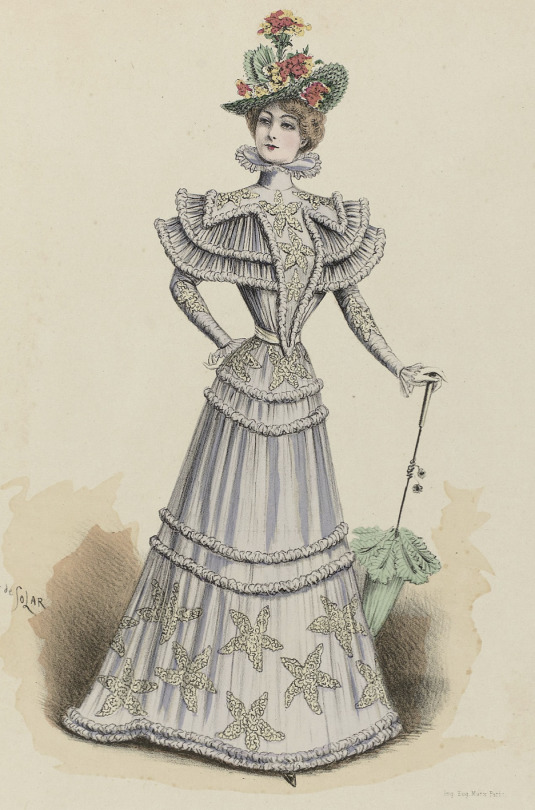
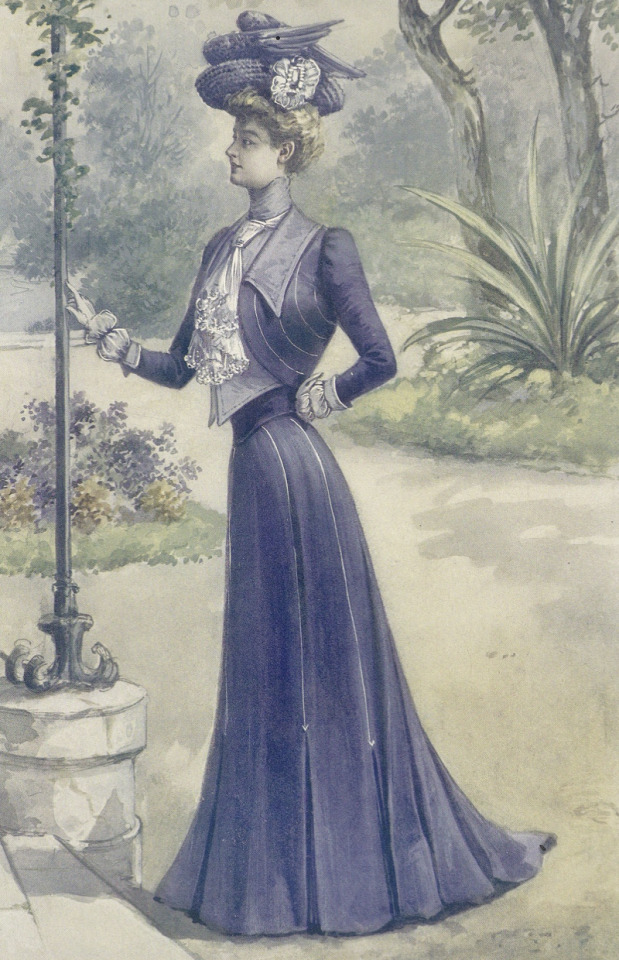
#i am so completely charmed by the starfish on the left dress#historical fashion polls#fashion plate#fashion poll#historical dress#historical fashion#polls#tumblr polls#dress history#fashion history#19th century#19th century dress#circa 1900#1900s style#1900s dress#1900s fashion#early 1900s#1900s#1890s dress#1890s fashion#1890s#circa 1898#20th century fashion#20th century#late 19th century#turn of the century
8 notes
·
View notes
Text
Inès - an 1890s daydress

Here's a not-so-little recolor of this dress by Kizaragy. I'm not sure if they have a tumblr, which is unfortunate because all I want to do is tell them how absolutely BREATHTAKING their dress is, and how well it works for the 1890s. Oh well. I'm telling the world instead, I suppose.
I'd say this style of dress was most fashionable between around 1892 and 1894, but you could probably use it for the whole 1890s, maybe even up to the early 1900s. It really depends on how closely your Sims follow fashion trends, I suppose.
There are swatches in more extravagant, "expensive" colors, as well as simpler, less bright ones. This means it's a very versatile dress in terms of class as well. Anyone from a farmer's wife to a noblewoman could wear it.
I also noticed that the mesh and texture are quite nicely divided into a top and bottom half, so I made some swatch overlays for the skirt as well. There's a separate link to that underneath the download links for the dress itself.
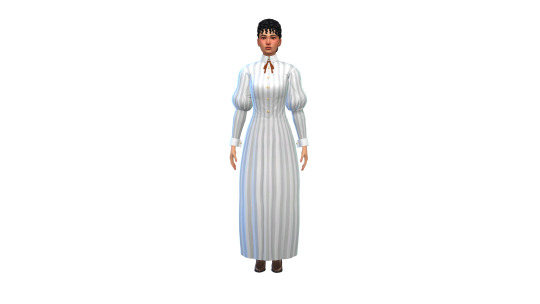
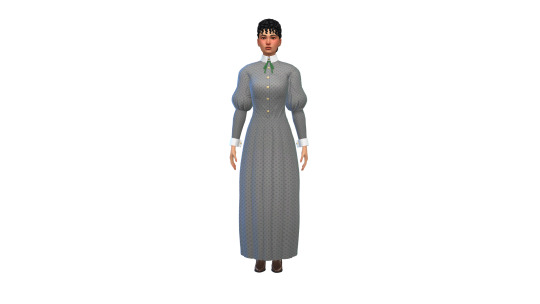


150 swatches - plain colors and 6 different patterns
Mesh is required (TSR warning)
Tagged as feminine
Tagged as Casual, Formal, Athletic, Party, Hot Weather and Cold Weather
Found in the Long Dress category
Disabled for random
Display index by decade
Download Inès Dress (SFS)
Alt Download (Mediafire)
Download SKIRT COLOR OVERLAY
Known issues: The original has a thing where it makes certain hats invisible, similarly to how a long-sleeved shirt makes bracelets invisible, except it's much more annoying, because what's an 1890s dress without hats? I can't fix this in a recolor since the mesh isn't included, but I've provided a short tutorial on how to fix this in the original. You're gonna need Sims 4 Studio (Star) installed.
Tutorial HERE
@twentiethcenturysims @decadesfinds @maxismatchccworld @mmoutfitters
#decades challenge#sims 4 decades#ts4 decades challenge#victorian cc#ts4 victorian#ts4 1890s#1890s cc#19c#sims 4 historical#ts4 historical#fullbody#historical cc#my cc#sims 4 cc#sims 4 custom content#ts4cc#af cc#recolor#the sims 4#sims 4#ts4#the file size of the original is like 1 mb and then there's this monster with its 30+ mb lol#all those swatches really add up!
246 notes
·
View notes